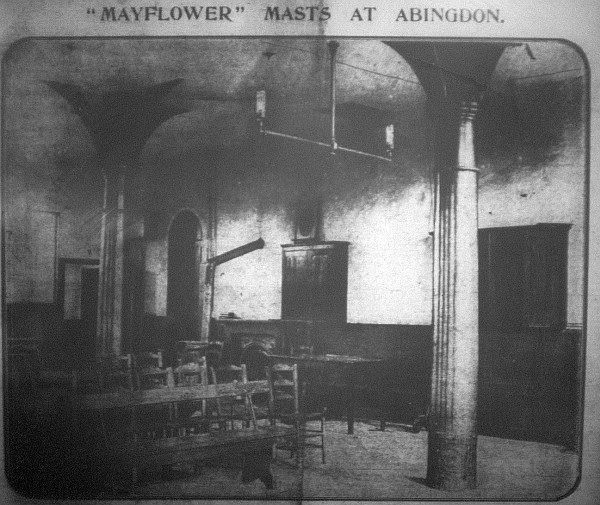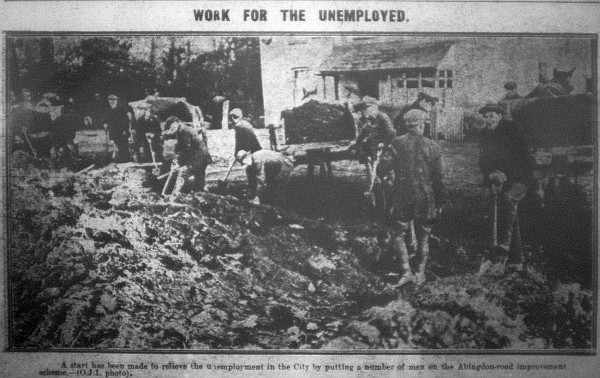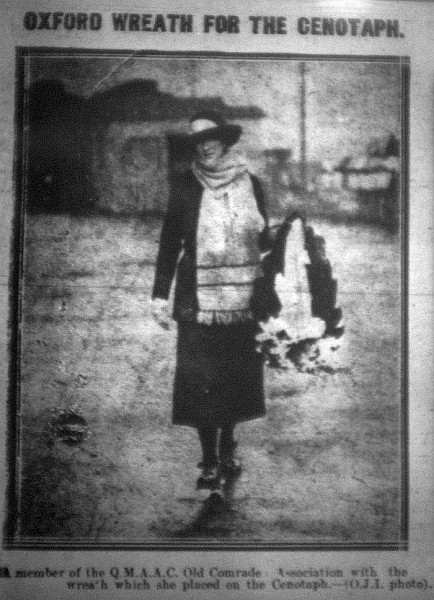
6th November
The tercentenary of the Sailing of the Mayflower, with the Pilgrim Fathers, to America, which has been celebrated this year, has led to an interesting discussion as to whether the pillars in the Abingdon Congregational Schoolroom are the masts of that historic ship. Dr Rendel Harris inspected them, and while withholding any decided opinion, he is investigating the question. The schoolroom was originally the Meeting House which dates from 1700. The Mayflower was broken up in, or about, 1658.
It was thought probable that there might have been an election this year and candidates were ready for nomination but at the last moment decided to withdraw. The four retiring councillors have therefore been elected, viz,, the Mayor (Councillor R. W. Langford), Councillor H. T. Clarke, J.P., Councillor C. Rippon, M.A, (Oxen), and Councillor Walter Thatcher.
The funeral took place in the Abingdon Cemetery on Wednesday afternoon last week of Mr George Westcott, landlord of the Bee Hive Inn, Stert Street, Abingdon, who died in the Sutherland Hospital, Reading, the previous Saturday, having a short time ago been removed from Peppard Sanatorium. Deceased was 49 years of age and for some years served in the Coldstream Guards, and as a reservist in the South African War. In the late war he rejoined his regiment and was subsequently transferred to the Suffolks as R.S.M. The funeral was conducted with military honours, the firing party being from the 4th Royal Berks. Deceased belonged to the Lodge of R.A.O.B. (Royal Antediluvian Order of Buffaloes). The floral tributes were numerous.
The first of a winter series of whist drives in connection with the Abingdon Bowling Club took place at the Roysse Rooms on Thursday evening last week, when upwards of 150 were present, the captain of the club (Mr Johnson) acted as M.C.

13th November
(Picture shows a project to relieve the number of unemployed by putting men to work on improvements to the Abingdon Road in Oxford)
At the Council meeting on Tuesday, Councillor W. B. Langford, of the firm of Messrs Langford and Sons, coal, corn and seed merchants, Stert Street, Abingdon, was unanimously re-elected to the Mayoralty on the proposition of Councillor A. E. Preston, seconded by Councillor Alec W. Morland.
The Abingdon Town Council have decided, after experiments, to light the Abingdon Corn Exchange with five electric 26 1/3 reflector lamps, similar to those in use at Newbury Town Hall.
The Borough Surveyor of Abingdon has issued a report to the Town Council on the water supply, which is short in the reservoir at Wootton, and advises the Corporation to look for a supply from some other source.
An entertainment and bazaar in aid of the Abingdon Church Memorial Hall and the Home and Foreign Missions was held in the Abingdon Corn Exchange on Thursday and Friday last, opened by Lady Norman. The stalls were well filled with the efforts of a working party with articles of needlework, aud also by other useful and fancy articles. There were good attendances and the results are expected to be very satisfactory.
In a billiard contest between members of the Abingdon Police and the Y.M C.A. last week the former were victorious – the total points being: Police 583, Y-M-C.A., 494
The Abingdon Bowling Club held its annual meeting in the Roysse Room on Thursday evening in last week, the president Alderman E Preston presiding. The balance sheet showed £4 4s 8d balance on the right side in the current account, and £32 6s 5d on the capital account. In view of heavier costs in the future, the annual subscription was raised from 10s to £1. The officers were re-elected, and a hearty vote of thanks given to the president for the great interest he took in the welfare of the club.
At the County Bench, William T. Hisney, Lodden Hill Farm Reading, was summoned for driving a motor car to the danger of the public on the Marcham road, on September 24th. It was stated that three cyclists had to get into the ditch to avoid being run down. Defendant was fined £5, and was to pay £1 expenses in each case.

20th November
Armistice Day was observed in Abingdon with the two minutes silence. At St. Helen’s Church tower the tenor bell was tolled 227 times, representing the number of Abingdon men who fell in the war. A large floral tribute was placed at the temporary memorial, by the Abingdon Corporation. The Comrades placed a laurel wreath, and at the end of the two minutes silence sounded the Last Post.
An Armistice Service was held at the Abingdon Congregational Church on Sunday evening when the Rev. Gill preached on the subject of ‘the Unknown Hero.’ The Last Post was sounded at the close of the service

27th November
Two Memorial Tablets are to be erected in St Helen’s Church, Abingdon, one being for men who fell in the war. A vestry meeting was held on Thursday last to obtain sanction to apply for faculties for the same.
The sum of £15 was raised by the Abingdon Wesleyan Rummage Sale last week, in aid of Children’s Homes and the Church Memorial Hall.
The Rev. J. P. Morris, of Lewes Baptist Chapel, has, it is stated, accepted the pastorate of Abingdon Baptist Chapel, and will commence his ministry on New Year Sunday.
Thank you for the extracts to the Faringdon Advertiser and Vale of the White Horse Gazette on the British Newspaper Archive, and Oxford Journal Illustrated for the pictures.
Fascinating stuff, especially about the Mayflower pillars. Was the Congregational Church what is now Ask ! ? Does anyone know if Dr Rendel Harris reached any conclusions as to whether the pillars were or were not from the Mayflower and why it should be thought that they could be ?
Thank you for another thought provoking blog. I look forward to the daily posting.
For many years my mother regularly attended the services at the Congregational Church in Abingdon and for a brief period I was a member of the Sunday school there in the 1950s. My mother – whose ashes were interred today – told me about the pillars and the connection with the Mayflower. I’ve often wondered if the link was ever proven or whether it was simply the result of someone’s overactive imagination.